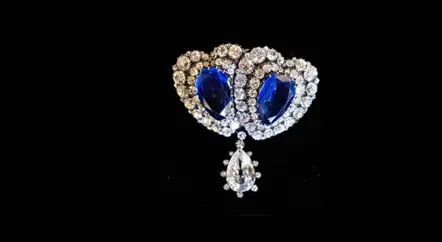We use platforms such as YouTube and Vimeo to display videos. These require the use of cookies, for which we need your consent. To watch this video, please click here to allow cookies.
In the State Drawing Room are two gilt-edged thrones with footstools. Each piece is engraved with elaborate carvings of lions, unicorns, shields, Cyphers, and Crowns and the initials ‘GR’ and ‘CR’.
The thrones were created for the Coronation of King George III and Queen Charlotte on 22 September 1761 and came to Chatsworth via the 4th Duke of Devonshire who was Lord Chamberlain to George III at the time.
Unusually for the period, the Coronation thrones of King George III and Queen Charlotte were carved by a female carpenter called Catherine Naish (d. 1772)1. Naish took over her father’s business on his death in 1759 and succeeded him as ‘Royal Joyner and Chair maker’, a position she held for thirteen years.
Her first royal commission is believed to have been in 1759 when she is recorded as having supplied a set of eight mahogany back stools to Prince William’s House in Leicester Square. A year later, she was entrusted with providing the monarch with a large state cradle that featured a canopy top on which was carved a crown and plume of feathers. As the symbol of the Prince of Wales, and commissioned the year before George III’s marriage to Queen Charlotte, it is likely that the cradle was intended for their future firstborn son and heir to the throne.
While several thrones would have been produced for the various stages of the Coronation, it is believed that the thrones at Chatsworth were those used immediately after King George III was crowned in St Edward’s Chair2. He would have been led to take his place next to Queen Charlotte on a centre stage ‘conspicuously visible to all’ in Westminster Abbey and, historically, it signified the moment the monarch took ‘…possession of his or her Kingdom’.3
The thrones were carved by Naish and were invoiced at £36 per throne. The original silk upholstery remains, with the exception of a missing gold fringe, and was woven by Royal Upholsterers Vile and Cobb at a cost of £18, 8s.
As George III’s Lord Chamberlain of the Household, the most senior officer of the Royal Household, the 4th Duke of Devonshire was charged with carrying out the sovereign’s commands with regard to new furnishings for the House of Lords and other areas within the Palace as the need arose. In this position, he was also entitled to claim, for his own benefit, any redundant furniture from within the Palace as soon as it ceased to have any use.
Continue reading
1 https://bifmo.furniturehistorysociety.org/entry/naish-catherine-1759-72
2 Royal Thrones 1760-1840 by Hugh Roberts p. 64
3 A House of Kings, ed. E. Carpenter (London, 1966), p. 407.






